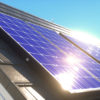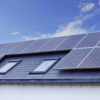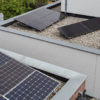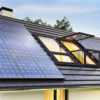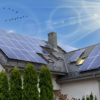Hydroponics continues to grow year on year and for good reason. Fresh, organic vegetables, bursting with nutrients and devoid of chemical muck is something most people wish. Besides, costly fertile farmlands and unpredictable rainfall makes traditional agriculture hard to practice for most people in Australia.
Luckily, modern hydroponic and aquaponic solutions have become affordable enough to allow anyone to start growing tasty veggies in their own backyard or available rooms quickly. Even though hydroponic farming is quite efficient as it requires far less water than traditional farming, it requires electricity to power pumps and grow lights.
But, can solar power provide hydroponic growers with an alternative that may help them drive down their cost of production? It’s an interesting question which has a rather nuanced answer.
The Challenges and Opportunities of Hydroponic Farming
Even though Australia has an agricultural surplus and a thriving export market, the largely arid, desert landscape and lack of fresh water make traditional farming a challenge. News is already coming in that Australia may have hit peak farming acreage, meaning there’s probably no more fertile land left to use.
These facts are unfortunately all too visible in supermarket aisles. The cost of regular food items is far more than what residents of other nations pay. This problem was greatly exacerbated during the Covid-19 crisis mostly due to panic-buying, a shaken supply chain and overall market destabilization.
But, this is also where hydroponics can provide a readily available solution. Not only does hydroponic produce need less water, it is generally of a higher quality as well. Additionally, crops in hydroponic gardens tend to grow 30%-50% faster (and stronger) since you can control their growth by exposing them to specific light spectrums even on a 24 hour grow-cycle if the crops can handle it.
Even so, hydroponic farming comes with its own set of challenges. While you can grow plants in open spaces like a terrace or backyard, those in closed rooms with grow lights are preferable. This means using electricity, which drives up the cost of production.
So, how can you reduce your electricity bills? Most growers use specially made LED grow lights that consume less power and are capable of putting out very specific light on demand. However, solar power can also help you take the edge off too.
Can Solar Power Help?
So, we know that hydroponics is a good idea but is held back by high production costs, primarily due to high power consumption. So, can solar power help us out here? After all, saving electricity bills is what solar power does best.
The answer depends on a few factors. Indeed, when implemented thoughtfully, solar power can help you get better results in a short time frame. However, let’s not forget that installing solar panels is costly too.
The high price of a solar installation can cause you to bump up the cost of your produce in the short run. But, this isn’t necessary as you can also recover your investment through electricity savings and selling power to the grid like you otherwise would.
That being said, there are a few things you can do to minimize your electricity consumption right from the get go.
Decide on what you want to power: The size of your solar power system will dictate how quickly you recoup its cost. Even though you can go for solar panels dedicated to your hydroponic setup, other power demands can be met too.
Using as much power as your panels can provide can greatly reduce the payback period. You can use a smart monitoring system such as Solar Analytics to oversee and manage your power supply with laser-like precision.
Select the right crops: Since the problem with solar power is the initial payback period, you can go with crops with a shorter growth cycle. Lettuce, spinach, Swiss chard, bell pepper and strawberries are some of the best crops to start with as they have grow-periods in the 30-40 day range.
You can also go for short-day plants like chrysanthemum, onion, soy-beans etc as they only grow in less than 12 hours of daylight. Plants like strawberries are ideal for solar powered hydroponics as not only are they short-day plants, but become harvest-ready really quickly too.
This argument assumes you intend to sell your produce, however. If you’re farming for personal consumption, then you can start with any crop suited for hydroponics.
Get high efficiency grow lights: The quality of grow lights cannot be emphasized enough, regardless of whether you’re planning to use solar power or not. Consider sticking with LED lights range since they’re the most efficient.
Another advantage of LED lights is that they can produce multiple light spectrums, so you needn’t get different lights to cover different parts of your plant’s growth cycles.
Don’t Go In Blind
Regardless of whether you intend to use hydroponics for personal or commercial purposes, solar power can really make your efforts more manageable. You will be powering your grow rooms and gardens for free once the payback period is over.
But, getting your investment to pay itself off as quickly as possible is a tricky question since it involves quite a number of variables. This is also a question that we at bidmysolar™ specialize in answering.
Having helped our clients throughout the length and breadth of Australia save thousands of dollars in solar purchases, we can safely say we know how to put together affordable solar power systems that deliver results.
We’d be happy to help you find creative and effective solutions for your hydroponic initiative. Feel free to contact us with any questions or call us at 1300 004 600 for a quick chat.

